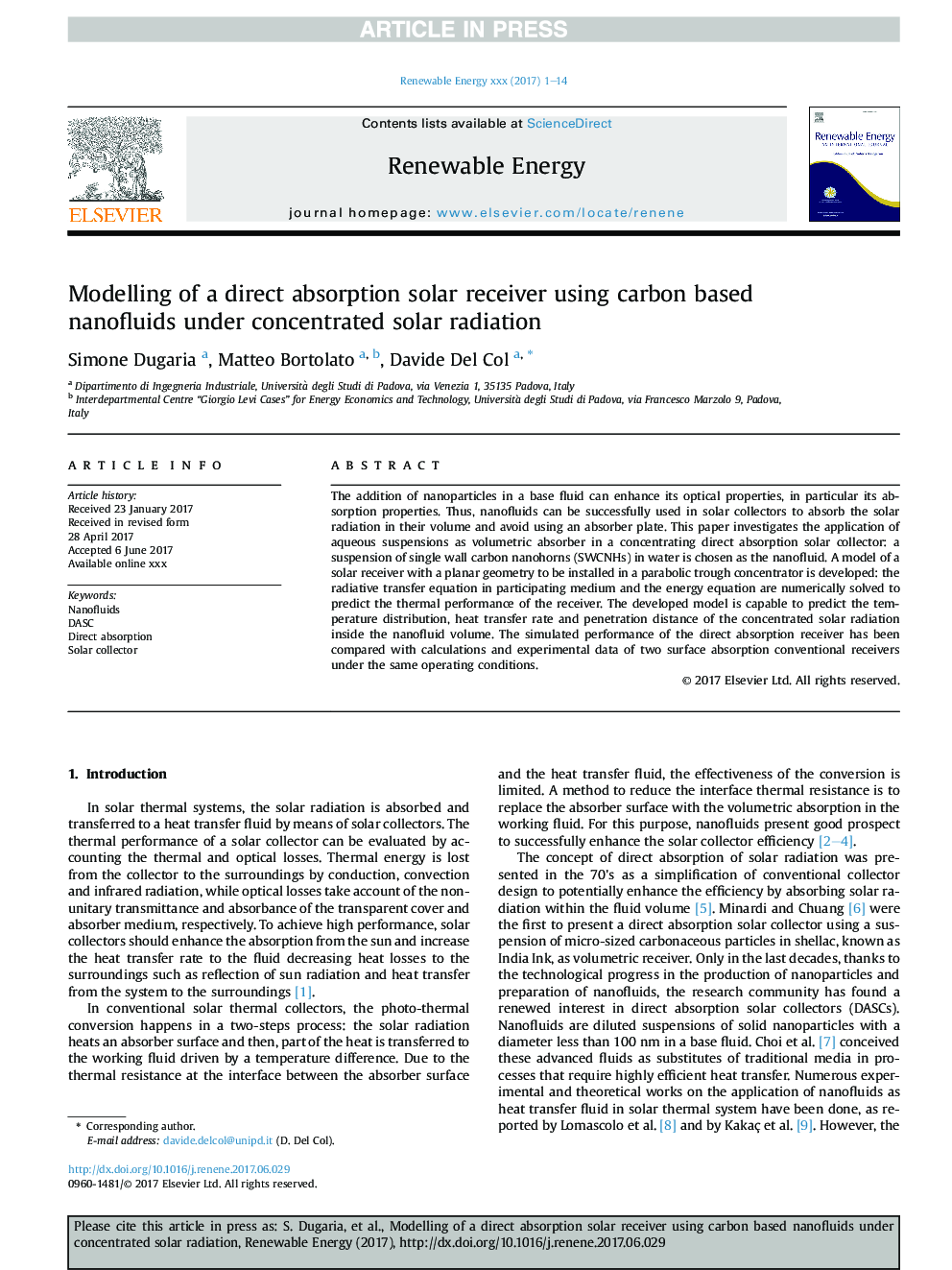| Article ID | Journal | Published Year | Pages | File Type |
|---|---|---|---|---|
| 6763986 | Renewable Energy | 2018 | 14 Pages |
Abstract
The addition of nanoparticles in a base fluid can enhance its optical properties, in particular its absorption properties. Thus, nanofluids can be successfully used in solar collectors to absorb the solar radiation in their volume and avoid using an absorber plate. This paper investigates the application of aqueous suspensions as volumetric absorber in a concentrating direct absorption solar collector: a suspension of single wall carbon nanohorns (SWCNHs) in water is chosen as the nanofluid. A model of a solar receiver with a planar geometry to be installed in a parabolic trough concentrator is developed: the radiative transfer equation in participating medium and the energy equation are numerically solved to predict the thermal performance of the receiver. The developed model is capable to predict the temperature distribution, heat transfer rate and penetration distance of the concentrated solar radiation inside the nanofluid volume. The simulated performance of the direct absorption receiver has been compared with calculations and experimental data of two surface absorption conventional receivers under the same operating conditions.
Related Topics
Physical Sciences and Engineering
Energy
Renewable Energy, Sustainability and the Environment
Authors
Simone Dugaria, Matteo Bortolato, Davide Del Col,
